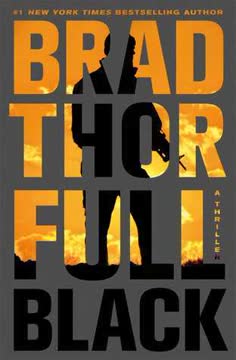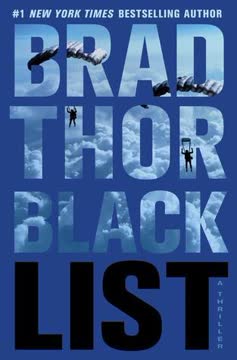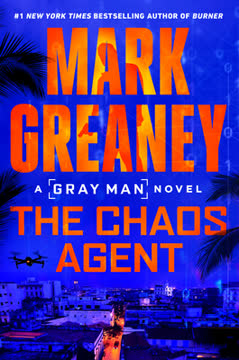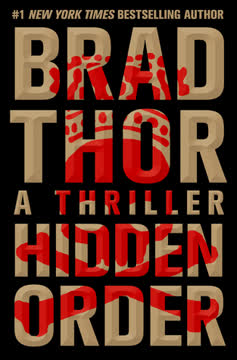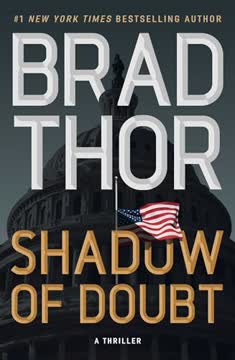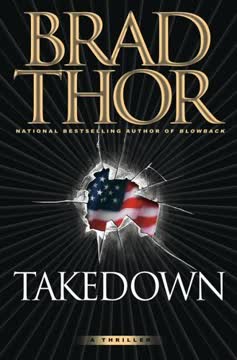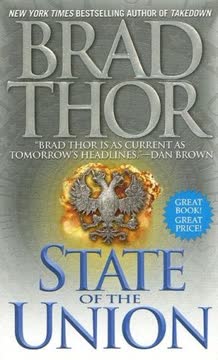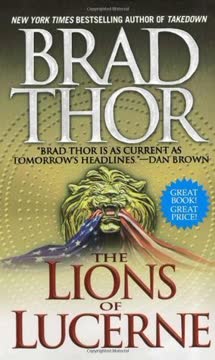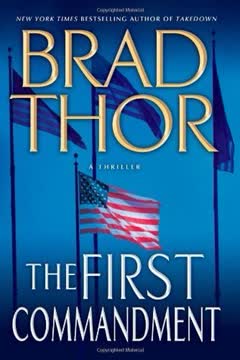Plot Summary
Shadows Over Isfahan
In the heart of Iran, billions are poured into a nuclear program, stoking fears in Israel and the West. The Isfahan facility, a supposed fortress, becomes the focal point of international anxiety. Iranian intelligence chief Azad Ashani, a pragmatic skeptic, senses doom as hardliners push the country toward confrontation. The regime's propaganda and paranoia set the stage for a high-stakes game, with the world watching and waiting for the first move.
Rapp's Deadly Assignment
Mitch Rapp, America's top counterterrorism operative, is introduced in Costa Rica, haunted by personal loss and driven by duty. He's on a covert mission to eliminate a political traitor responsible for deaths and national betrayal. Rapp's psychological complexity is revealed—his guilt, rage, and the cold professionalism that makes him both lethal and isolated. The operation is a microcosm of the shadow wars fought beyond the headlines, where justice is personal and brutal.
The Mossad Janitor
Adam Shoshan, a Mossad veteran disguised as a janitor, has spent over a year inside Isfahan's nuclear plant. His cover is perfect, his mission clear: gather intelligence and, if possible, sabotage the facility. Shoshan's dual identity and personal history with Iran add depth to his resolve. He identifies the plant's structural weakness, inspired by the collapse of the Twin Towers, and prepares a plan that could cripple Iran's nuclear ambitions without an airstrike.
Iran's Nuclear Gamble
Inside Iran, Ashani navigates a treacherous landscape of hardliners, military men, and the ruthless Hezbollah operative Imad Mukhtar. The regime's nuclear gamble is as much about internal power as external deterrence. The facility's security is questioned, and paranoia about Israeli and American sabotage runs high. The narrative explores the psychology of revolution, the dangers of fanaticism, and the fragility of regimes built on fear.
The Assassination in Costa Rica
Rapp's mission in Costa Rica culminates in the assassination of the traitor, Stu Garret. The operation is meticulously planned to look like an accident, reflecting the moral ambiguity of covert action. Rapp's internal struggle—his need for vengeance, his professional detachment, and his inability to escape the consequences of violence—underscores the personal cost of the war on terror.
Sabotage and Fallout
Shoshan's sabotage succeeds: thermobaric explosives collapse the facility, creating a radioactive disaster. The destruction is total, the method undetectable by conventional means. Iran's pride is shattered, and the regime scrambles to control the narrative. The fallout is both literal and political, as the world reacts to the sudden loss of Iran's nuclear centerpiece.
The Web Tightens
Iran blames Israel and the U.S., demanding retribution. President Amatullah, a master propagandist, manipulates public outrage and international opinion. Meanwhile, Rapp and CIA Director Irene Kennedy see opportunity in the chaos, pushing for operations that could destabilize the Iranian regime further. The narrative explores the use of lies, alternative truths, and the power of perception in modern conflict.
The Catastrophe Unleashed
The destruction of Isfahan triggers a cascade of events: Iran threatens to close the Strait of Hormuz, oil prices soar, and the world teeters on the edge of war. The U.S. administration, led by President Alexander, must navigate a minefield of military, diplomatic, and intelligence challenges. The story delves into the machinery of crisis management, the limitations of bureaucracy, and the necessity of decisive action.
Blame and Deception
At the United Nations, Iran presents doctored evidence, blaming the U.S. and Israel for the disaster. The U.S. counters with satellite imagery and a manufactured claim that Iranian dissidents destroyed the facility. The CIA orchestrates a propaganda coup, using the MEK to claim responsibility and sow discord within Iran. The chapter highlights the modern battlefield of information, where truth is malleable and victory often goes to the best liar.
The President's Dilemma
President Alexander faces impossible choices: how to respond to Iranian provocations, whether to escalate or de-escalate, and how to use covert action to protect American interests. He relies on Rapp's vision and ruthlessness, authorizing a gloves-off campaign against Hezbollah and Iranian proxies. The narrative examines the burden of leadership, the ethics of preemptive action, and the cost of security in a dangerous world.
The Game of Lies
As the crisis deepens, alliances shift and betrayals multiply. Ashani, caught between loyalty and conscience, becomes a pivotal figure. The Mossad, CIA, and Iranian factions all maneuver for advantage. The story explores the psychology of spies, the loneliness of double lives, and the thin line between patriotism and treason.
The Back Channel
Kennedy and Ashani attempt to open a back channel for peace, offering economic aid in exchange for de-escalation. Their clandestine meeting in Mosul is fraught with risk, as both sides struggle to control their own hardliners. The narrative reveals the fragility of trust, the difficulty of compromise, and the ever-present threat of betrayal.
The Kidnapping
A meticulously planned ambush in Mosul results in Kennedy's kidnapping by Mukhtar and Quds Force operatives. The attack is brutal, her security detail executed, and the city descends into chaos. Rapp's personal and professional worlds collide as he launches a desperate, unsanctioned rescue mission. The chapter explores the psychology of hostage-taking, the trauma of captivity, and the limits of human endurance.
The Great Mosque Standoff
Rapp, disguised and aided by Kurdish allies, infiltrates the Great Mosque where Kennedy is held. The operation is a race against time, complicated by local politics, religious sensitivities, and the ever-present threat of violence. The narrative builds to a tense, claustrophobic climax, highlighting the improvisational genius and moral ruthlessness required in covert operations.
Torture and Rescue
Kennedy suffers brutal abuse but refuses to break, drawing on inner reserves of strength and loyalty. Rapp's assault is swift and lethal, culminating in the execution of her tormentors and her extraction. The rescue is both a personal and symbolic victory, but the scars—physical and psychological—remain. The chapter interrogates the price of survival, the ethics of vengeance, and the meaning of justice.
The Price of Truth
The fallout from the rescue is global: Iran's lies are exposed, Amatullah's regime is destabilized, and the U.S. asserts its dominance. Ashani, torn by guilt and pragmatism, helps broker a fragile peace, even as he faces internal threats. Rapp's methods come under scrutiny, but the necessity of his actions is grudgingly acknowledged. The narrative reflects on the cost of truth in a world built on deception.
The Endgame in Tehran
In Tehran, the Supreme Leader and Ayatollah Najar move against Amatullah and the hardliners, executing traitors and seeking to restore order. Ashani survives by aligning with the new power structure, but the experience leaves him changed. The story closes with Rapp hunting down Mukhtar in Lebanon, delivering final justice. The cycle of violence continues, but the balance of power has shifted—at least for now.
Characters
Mitch Rapp
Rapp is the embodiment of the modern covert warrior: brilliant, ruthless, and deeply scarred by personal loss. His relationships are marked by distance and intensity, his loyalty absolute but his trust hard-won. Rapp's psychological complexity—his guilt, rage, and capacity for violence—drives the narrative. He is both a weapon and a warning: the cost of security is often paid in blood and solitude.
Irene Kennedy
As CIA Director, Kennedy is both strategist and conscience. Her intellect and empathy make her a formidable leader, but also a target. Her kidnapping and ordeal reveal her inner strength and the burdens of command. Kennedy's relationship with Rapp is one of mutual respect and unspoken understanding, anchoring the story's emotional core.
Azad Ashani
Ashani is a rare voice of reason within the Iranian regime, torn between duty and conscience. His skepticism of hardline ideology and his willingness to seek peace make him both valuable and vulnerable. Ashani's psychological journey—from loyal servant to reluctant dissident—mirrors the larger struggle within Iran, and his choices shape the outcome of the crisis.
Imad Mukhtar
Mukhtar is the embodiment of ideological extremism: ruthless, charismatic, and utterly committed to his cause. His history of violence and manipulation makes him a formidable antagonist. Mukhtar's psychological profile is marked by a martyr complex, a disdain for compromise, and a willingness to use any means necessary. His actions drive the story's darkest moments.
President Josh Alexander
Alexander is a young, pragmatic president forced to navigate unprecedented crises. His willingness to authorize covert action and his reliance on Rapp's judgment reflect both strength and vulnerability. Alexander's psychological burden—the fear of catastrophic loss, the need for vision—shapes the administration's response and the story's moral questions.
Adam Shoshan
Shoshan's infiltration of Isfahan is a testament to patience, ingenuity, and personal sacrifice. His dual identity and personal history with Iran add layers to his character. Shoshan's actions are driven by loyalty to Israel and a deep understanding of the region's complexities.
Maria Rivera
Rivera is a former Secret Service agent drawn into Rapp's world. Her competence and emotional intelligence provide balance to Rapp's intensity. Their relationship is marked by mutual respect, attraction, and the shared burden of violence.
Amatullah
Amatullah is a master of propaganda, driven by ego and a need for control. His willingness to sacrifice truth, allies, and even his own people for power makes him a dangerous adversary. Psychologically, he is both delusional and cunning, a symbol of the dangers of unchecked authority.
Ayatollah Najar
Najar is the enforcer of the revolution's purity, wielding violence and ideology with equal fervor. His relationship with Ashani and Amatullah is fraught with rivalry and suspicion. Najar's actions reflect the volatility of revolutionary regimes and the ever-present threat of purges.
Stan Stilwell
Stilwell is the quintessential field officer: pragmatic, connected, and unflappable. His local knowledge and improvisational skills are crucial to the rescue operation. Stilwell's loyalty to Rapp and Kennedy underscores the importance of trust and competence in covert work.
Plot Devices
Dual Timelines and Perspectives
The story unfolds through alternating perspectives—Rapp's operations, Ashani's internal struggles, Kennedy's ordeal, and the Mossad's sabotage. This structure allows for a multifaceted exploration of the crisis, revealing the interconnectedness of personal and political decisions.
Sabotage as Catalyst
The destruction of Isfahan by internal sabotage, rather than overt military action, shifts the narrative from conventional warfare to the shadowy world of espionage. The ambiguity of responsibility fuels propaganda, miscalculation, and escalation.
Propaganda and Alternative Truths
Both sides manipulate facts, create alternative narratives, and use media to sway opinion. The MEK's manufactured claim of responsibility, Iran's doctored evidence, and the U.S. president's public denials illustrate the power of perception in modern conflict.
Kidnapping and Hostage Crisis
Kennedy's abduction personalizes the geopolitical struggle, forcing characters to confront their own limits and the ethics of rescue. The psychological trauma of captivity and the moral ambiguity of the rescue operation are central to the story's tension.
Back Channel Diplomacy
The clandestine meeting between Kennedy and Ashani represents the possibility of peace, but is constantly threatened by hardliners and betrayal. The fragility of trust and the difficulty of compromise are explored through these secret talks.
Ruthless Justice and Moral Ambiguity
Rapp's methods—torture, assassination, and unsanctioned action—raise questions about the cost of security and the boundaries of morality. The story refuses easy answers, instead presenting the necessity and danger of operating in the gray areas of war.
Analysis
Protect and Defend is a high-octane political thriller that explores the intersection of personal trauma, national security, and the shifting sands of international power. Through its complex characters and interwoven plotlines, the novel interrogates the ethics of covert action, the dangers of propaganda, and the psychological toll of endless conflict. Vince Flynn's narrative suggests that in a world where truth is weaponized and enemies are both foreign and domestic, survival demands both vision and ruthlessness. The story's ultimate lesson is that the price of security is eternal vigilance—and that the line between protector and predator is perilously thin. In the end, justice is delivered not by institutions, but by individuals willing to bear the burden of violence so that others may live in peace.
Last updated:
FAQ
0. Synopsis & Basic Details
What is Protect and Defend about?
- Geopolitical Chess Match: The novel plunges into a high-stakes international crisis ignited by the mysterious destruction of Iran's clandestine nuclear facility in Isfahan. While Iran blames the U.S. and Israel, demanding retribution, the world teeters on the brink of war.
- Covert Operations Unfold: America's top counterterrorism operative, Mitch Rapp, is tasked with navigating this volatile landscape, employing deception and ruthless tactics to counter Iranian aggression and destabilize its hardline regime. This includes a personal mission to eliminate a domestic traitor and a broader strategy to expose Iran's lies.
- CIA Director Kidnapped: The crisis escalates dramatically when CIA Director Irene Kennedy, attempting back-channel diplomacy in Iraq, is abducted by Iranian-backed terrorists. Her capture triggers a desperate, unsanctioned rescue mission led by Rapp, forcing the U.S. to confront the moral ambiguities of covert warfare and the personal cost of national security.
Why should I read Protect and Defend?
- Unflinching Realism: Vince Flynn delivers a gripping, all-too-realistic portrayal of international intrigue, espionage, and counterterrorism, offering a visceral look at the moral compromises and brutal realities faced by those on the front lines. The novel's detailed procedural elements and geopolitical insights provide a compelling sense of authenticity.
- Complex Character Dynamics: Beyond the action, the book delves into the psychological depths of its characters, particularly Mitch Rapp's internal struggles with grief, duty, and the blurred lines of justice. Readers will find themselves drawn to the intricate relationships and evolving motivations that drive the narrative.
- Timely & Provocative Themes: The novel explores enduring themes of propaganda, information warfare, the ethics of preemptive action, and the fragility of peace in a world dominated by extremist ideologies. It challenges readers to consider the true cost of security and the difficult choices leaders must make.
What is the background of Protect and Defend?
- Post-9/11 Geopolitics: The story is set against the backdrop of heightened global tensions following the 9/11 attacks, with a particular focus on Iran's nuclear ambitions and its proxy warfare in the Middle East. The narrative reflects the real-world anxieties surrounding nuclear proliferation and the rise of non-state actors.
- Iranian Internal Strife: The novel highlights the deep-seated political and religious divisions within Iran, contrasting the hardline clerical regime with more pragmatic elements and a growing internal resistance movement. This internal conflict is a key driver of the plot, influencing both domestic and international actions.
- Technological Espionage & Warfare: The book incorporates advanced surveillance technologies, cyber warfare, and sophisticated sabotage techniques, showcasing the evolving nature of modern espionage. From Mossad's infiltration of a nuclear facility to the CIA's use of "alternative truths," technology plays a crucial role in shaping the conflict.
What are the most memorable quotes in Protect and Defend?
- "The people want to eat it, they just don't want to see how it's made.": Mitch Rapp's "sausage factory analogy" (Chapter 13) succinctly captures the public's desire for security and justice without confronting the brutal, often morally ambiguous methods required to achieve it. This quote encapsulates a central theme of the novel: the hidden costs of covert operations.
- "Blitz hard and blitz often, and remember, this is coming from an ex-quarterback.": President Alexander's football metaphor (Chapter 13) reveals his aggressive, proactive approach to national security, contrasting with bureaucratic caution. It signifies his willingness to empower Rapp to take decisive, unconventional action against America's enemies.
- "Allah favors the bold. He has great plans for us. That is why we survived the attack in Isfahan.": Imad Mukhtar's declaration (Chapter 27) embodies the fanaticism and self-delusion of the novel's antagonist. This quote highlights his martyr complex and unwavering belief in divine justification for his violent actions, driving his reckless escalation of the conflict.
What writing style, narrative choices, and literary techniques does Vince Flynn use?
- Propulsive, Lean Prose: Flynn employs a direct, unadorned writing style that prioritizes action and plot momentum. His sentences are often short and impactful, creating a sense of urgency that propels the reader through the complex narrative.
- Alternating Perspectives & Dual Timelines: The novel masterfully weaves together multiple viewpoints—from Rapp's boots-on-the-ground perspective to Kennedy's strategic dilemmas and Ashani's internal conflicts—often shifting rapidly between them. This technique, combined with parallel timelines, builds suspense and provides a comprehensive, multifaceted understanding of the unfolding crisis.
- Realistic Procedural Detail & Moral Ambiguity: Flynn integrates extensive, believable details about intelligence gathering, military operations, and political maneuvering, lending authenticity to the story. He consistently places his characters in morally gray areas, forcing them to make difficult choices where there are no easy answers, thereby challenging the reader's own ethical framework.
1. Hidden Details & Subtle Connections
What are some minor details that add significant meaning?
- Stu Garret's "Cheap" Trait: Garret's habit of avoiding the onboard toilet to save on waste tank pump-out fees (Chapter 5) is a seemingly trivial detail that subtly underscores his deep-seated selfishness and moral bankruptcy. This minor quirk foreshadows his larger ethical failings and makes his brutal end feel like a fitting consequence for a man who prioritized personal gain over all else.
- Shoshan's Tinkering Hobby: The Mossad operative's lifelong fascination with fixing mechanical and electrical items (Chapter 6) is initially presented as a harmless hobby. However, it becomes the crucial element that allows him to gain trust, access blueprints, and ultimately identify the structural weakness of the Isfahan facility, transforming a personal quirk into a pivotal plot device for the entire sabotage operation.
- The "Peacock President" Nickname: Ashani's internal reference to Amatullah as the "peacock president" (Chapter 15) is more than just an insult; it reveals the deep contempt and power struggles within the Iranian regime. This subtle detail highlights Amatullah's narcissism and foreshadows the internal dissent that will eventually lead to his downfall, connecting personal disdain to broader political instability.
What are some subtle foreshadowing and callbacks?
- Rapp's Guilt and Foreshadowed Despair: In Chapter 1, Rapp reflects on his wife's death, noting, "There had been moments—moments of deep despair where Rapp had quietly wished one of them would succeed. He welcomed the challenge. Just maybe, someone would get lucky and put him out of his misery." This early internal monologue subtly foreshadows the profound emotional toll his work takes and the personal stakes involved in Kennedy's kidnapping, hinting at his willingness to sacrifice himself.
- Ashani's Earthquake Analogy: When contemplating the impending doom of the nuclear facility, Ashani recalls the "feelings he'd had as a graduate student back in 1979" during the fall of the Shah (Chapter 2). This callback to a past revolution foreshadows the potential for internal collapse and societal upheaval within Iran, suggesting that the regime's current trajectory is unsustainable and prone to repeating historical patterns.
- The "Everyone Breaks" Training Callback: During her captivity, Kennedy vividly recalls a CIA training lecture about the kidnapping of Beirut station chief Bill Buckley, where instructors emphasized that "everyone breaks" (Chapter 46). This chilling callback foreshadows the brutal torture she endures and underscores the immense psychological pressure she faces, highlighting the ultimate vulnerability of even the most hardened operatives.
What are some unexpected character connections?
- Rapp and Alexander's Shared "Vision": Despite their different backgrounds, President Alexander identifies a shared trait with Rapp: "vision. Having a sense of how things will play out when certain things are set in motion" (Chapter 13). This unexpected connection, rooted in strategic foresight rather than personal history, forms the basis of their unconventional alliance and Alexander's trust in Rapp's ruthless methods.
- Ashani's Unwitting Alliance with Rapp: Minister Ashani, initially a reluctant participant in Amatullah's schemes, becomes an unwitting ally to Rapp by providing Mukhtar's contact numbers (Chapter 54). This connection, born out of Ashani's moral conflict and desire to prevent further bloodshed, demonstrates how desperate circumstances can forge alliances across enemy lines, blurring traditional loyalties.
- Stilwell's "Lady Di" Persona: Stan Stilwell, the CIA's chief of base in Mosul, invents a fictional boss named "Lady Di" (Chapter 29) to deflect attention and maintain his low-level operative cover. This unexpected detail reveals his cunning and adaptability, showcasing how field agents create elaborate personas and narratives to survive and operate effectively in hostile environments.
Who are the most significant supporting characters?
- Stan Stilwell, the Ground-Level Strategist: As the CIA's chief of base in Mosul, Stilwell is indispensable for his deep local knowledge, extensive network of contacts (including the Kurds), and pragmatic approach to operating in a chaotic war zone. His ability to provide secure locations, intelligence, and tactical support (Chapter 25, 29) is crucial to Rapp's rescue mission, highlighting the vital role of experienced field officers.
- Ayatollah Najar, the Regime's Moral Compass (and Enforcer): Najar, head of the Guardian Council, initially appears as a hardliner but emerges as a figure of internal accountability within the Iranian government. His willingness to confront Amatullah's lies and execute General Sulaimani (Chapter 60) demonstrates his significant power and his role in stabilizing the regime, even through brutal means.
- Marcus Dumond, the Digital Oracle: Langley's "computer genius and hacker extraordinaire" (Chapter 48), Dumond's technical prowess in tracking cell signals, mining databases, and providing real-time intelligence is critical to locating Kennedy. His ability to sift through vast amounts of data and pinpoint Mukhtar's location (Chapter 59) underscores the increasing importance of cyber capabilities in modern espionage.
2. Psychological, Emotional, & Relational Analysis
What are some unspoken motivations of the characters?
- Rapp's Vengeance as a Driving Force: While Rapp is driven by duty, his decision to personally execute Stu Garret (Chapter 5) and his intense focus on Mukhtar (Epilogue) are deeply rooted in a desire for personal vengeance for his wife's death. This unspoken motivation fuels his ruthlessness and willingness to disregard orders, making his actions intensely personal despite their national security implications.
- Ashani's Self-Preservation and Moral Awakening: Ashani's initial compliance with Amatullah's schemes is driven by self-preservation within a dangerous political landscape. However, his near-death experience at Isfahan and the realization of Amatullah's reckless deception (Chapter 18, 51) awaken a moral conscience, motivating him to betray his president to prevent a wider war and protect his family.
- Amatullah's Desperate Need for Legitimacy: President Amatullah's bombastic rhetoric, elaborate lies, and willingness to provoke international conflict (Chapter 26, 52) are driven by an unspoken, desperate need to consolidate power and legitimize his increasingly fragile regime. His actions are less about genuine belief and more about maintaining control through manufactured crises and public outrage.
What psychological complexities do the characters exhibit?
- Rapp's Controlled Rage and Anxiety: Beneath Rapp's cold, professional exterior lies a profound psychological complexity. He experiences anxiety attacks (Chapter 53) stemming from his inability to protect his wife, and his "anger came boiling up from deep in his gut" (Chapter 40) when he sees Kennedy's dead bodyguards. This duality of controlled lethality and deep emotional vulnerability makes him a compelling, if terrifying, protagonist.
- Kennedy's Stoic Resilience and Inner Conflict: During her torture, Kennedy exhibits remarkable psychological resilience, maintaining a "blankest expression" (Chapter 39) despite brutal physical abuse. Her internal debate about breaking under torture and her decision to choose death over betraying her country's secrets (Chapter 55) reveal a profound inner strength and a deep-seated commitment to duty, even at the cost of her own life.
- Mukhtar's Delusional Martyr Complex: Imad Mukhtar's unwavering belief that "Allah favors the bold" and has "great plans for us" (Chapter 27) despite his reckless actions and the mounting casualties, showcases a profound martyr complex. This psychological trait makes him impervious to reason and compromise, driving him to escalate violence in the belief that it serves a higher, divine purpose.
What are the major emotional turning points?
- Rapp's Decision to Kill Garret Personally: The moment Rapp decides to take over the assassination of Stu Garret from Rivera (Chapter 1, 3), driven by a desire to "see the fear in Garret's eyes," is a significant emotional turning point. It highlights his deep-seated need for personal retribution and the blurring of his professional detachment with raw, personal vengeance.
- Ashani's Discovery of Amatullah's Deception: Ashani's realization that Amatullah and Mukhtar conspired to kidnap Kennedy and sink the Sabalan, keeping him "in the dark" (Chapter 51), is a pivotal emotional shift. This betrayal shatters his remaining loyalty to Amatullah and motivates him to risk treason by contacting Rapp, prioritizing national stability over personal allegiance.
- Kennedy's Refusal to Read the Statement: Despite facing the threat of brutal rape and death, Kennedy's unwavering refusal to read Mukhtar's propaganda statement (Chapter 55) is a powerful emotional climax. This act of defiance, choosing integrity over survival, underscores her profound commitment to her country and serves as a testament to her unbreakable spirit.
How do relationship dynamics evolve?
- Rapp and Rivera: From Colleagues to Accepting Partners: Their relationship evolves from a professional pairing with a casual sexual encounter into a deeper, more accepting partnership. Rivera's understanding of Rapp's need for personal vengeance ("I think I know why you did what you did last night, and I'm not mad." - Chapter 9) signifies a level of emotional maturity and acceptance that Rapp hasn't experienced since his wife's death, hinting at a more profound connection.
- Kennedy and Ashani: From Adversaries to Reluctant Allies: Initially counterparts in opposing intelligence agencies, Kennedy and Ashani develop a fragile trust through their back-channel meetings. Ashani's eventual decision to betray Mukhtar and Amatullah by providing Rapp with critical intelligence (Chapter 54) transforms their dynamic into one of reluctant, pragmatic alliance, driven by a shared desire to avert catastrophic conflict.
- Alexander and Rapp: A President's Trust in a Maverick: President Alexander, initially cautious, quickly develops a profound trust in Rapp's unconventional methods and "vision" (Chapter 13). This relationship evolves into one where Alexander grants Rapp unprecedented autonomy ("twenty-four hours…no questions asked." - Chapter 45), recognizing that Rapp's ruthlessness is necessary to protect national interests, even if it means operating outside traditional legal boundaries.
4. Interpretation & Debate
Which parts of the story remain ambiguous or open-ended?
- Ashani's Full Extent of Knowledge: While Ashani claims to have been "deceived by his own government" (Chapter 51) regarding Kennedy's kidnapping, his deep understanding of Amatullah's character and Mukhtar's ruthlessness leaves open the question of how much he truly suspected or implicitly condoned. His actions, though ultimately helpful, could be interpreted as a calculated move for self-preservation and political positioning.
- The Long-Term Impact of "Alternative Truths": The U.S. strategy of creating a false narrative about the Isfahan sabotage (Chapter 27) successfully deflects blame and destabilizes Iran. However, the novel leaves ambiguous the long-term consequences of such information warfare on international trust and the global perception of truth, inviting debate on whether such tactics ultimately undermine the very values they aim to protect.
- The Future of Iranian Leadership: While Amatullah is removed from power and Mukhtar is killed, the novel doesn't definitively resolve the internal power struggles within Iran. The Supreme Leader and Ayatollah Najar consolidate power, but the underlying tensions between hardliners and pragmatists, and the potential for future revolutions, remain open-ended, suggesting a continuous cycle of conflict and instability.
What are some debatable, controversial scenes or moments in Protect and Defend?
- Rapp's Torture of Prisoners: The graphic depiction of Rapp torturing prisoners, including cutting off a testicle and threatening castration (Chapter 42, 44), is highly controversial. The novel presents this as a necessary evil to extract information quickly and save Kennedy, but it forces readers to confront the ethical boundaries of interrogation and whether such methods are justifiable, even in extreme circumstances.
- The U.S. Orchestration of "Alternative Truths": The decision by President Alexander and Kennedy to fabricate a story about the MEK destroying the Isfahan facility (Chapter 27) is a debatable moment. While presented as a strategic necessity to counter Iranian propaganda, it raises questions about the U.S. government's own use of deception and whether it compromises its moral authority on the international stage.
- The Sinking of the Sabalan by Iran Itself: The revelation that Iran deliberately torpedoed its own frigate, the Sabalan, to frame the U.S. (Chapter 52) is a shocking and controversial plot point. It highlights the extreme lengths to which desperate regimes will go for political gain, prompting debate on the nature of state-sponsored terrorism and the manipulation of international incidents.
Protect and Defend Ending Explained: How It Ends & What It Means
- Mukhtar's Assassination: Justice or Vengeance?: The novel concludes with Mitch Rapp personally assassinating Imad Mukhtar in Tripoli, Lebanon (Epilogue). This act, described by Rapp as "poetic justice," provides a definitive end to the immediate threat and a sense of closure for Kennedy's ordeal. However, it leaves open the interpretation of whether it's true justice or simply a perpetuation of the cycle of violence, reflecting Rapp's uncompromising nature and the novel's theme of ruthless justice.
- Iranian Regime's Internal Purge: In Tehran, Ayatollah Najar, with the Supreme Leader's backing, orchestrates a swift and brutal purge of Amatullah's co-conspirators, including the execution of General Sulaimani (Chapter 60). This signifies a reassertion of control by the more pragmatic (though still hardline) elements of the regime, demonstrating that internal power struggles can be as deadly as external conflicts and that accountability, however violent, is eventually meted out.
- Fragile Peace and Lingering Scars: While Kennedy is rescued and the immediate crisis averted, the ending suggests a fragile peace. Kennedy, though physically recovered, bears the psychological scars of her torture, and her final instruction to Rapp—"Kill him" (Epilogue)—reveals the lasting impact of violence. The novel implies that while specific battles can be won, the broader war against extremism and deception is ongoing, requiring constant vigilance and
Review Summary
Protect and Defend receives high praise for its thrilling plot, intense action, and complex characters. Readers appreciate Flynn's ability to craft a believable, current-events-inspired story involving Iran, Israel, and the U.S. Many find Mitch Rapp's character development compelling, though some criticize the graphic violence. The book's fast pace and international intrigue keep readers engaged, with particular praise for the portrayal of CIA Director Irene Kennedy. While some readers note political bias, most enjoy the novel as an entertaining and thought-provoking thriller.
Mitch Rapp Series Series
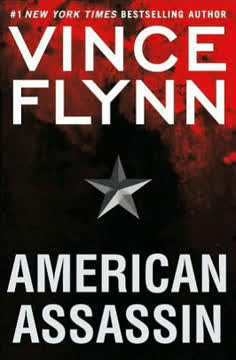
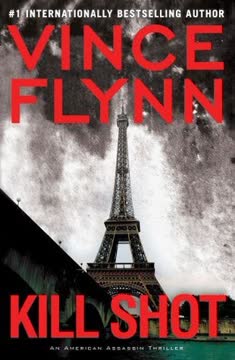
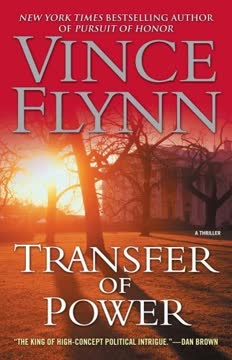
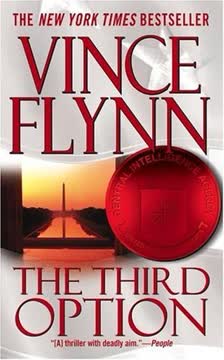
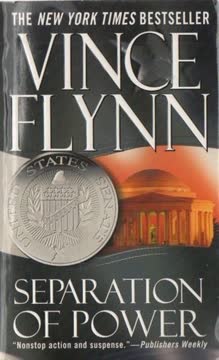
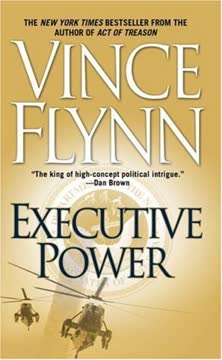
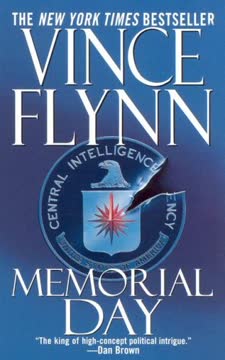
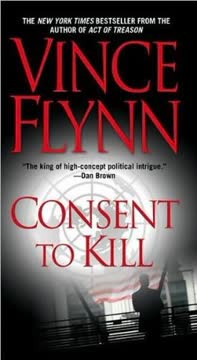
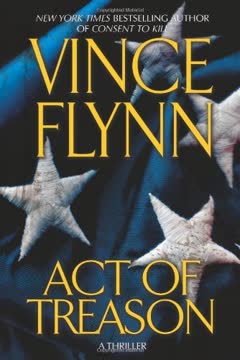
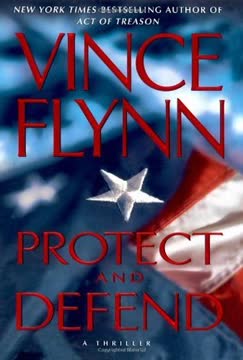

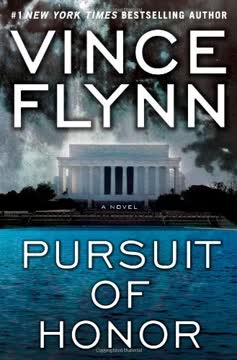
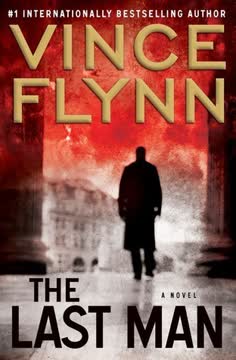
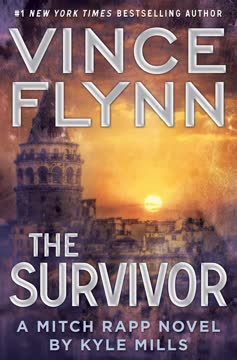
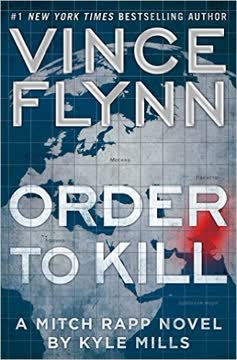
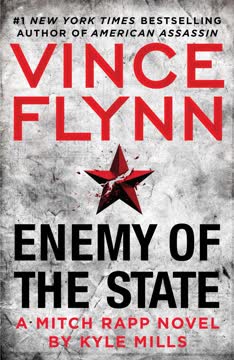
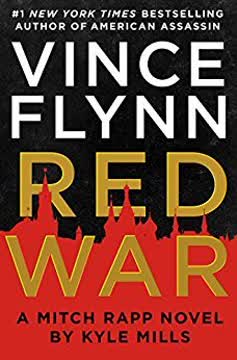
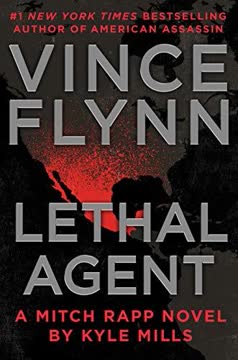
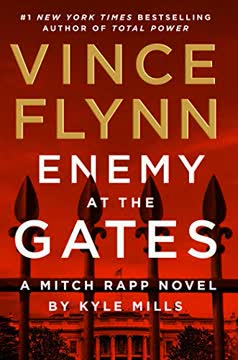
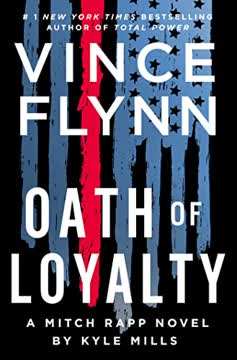
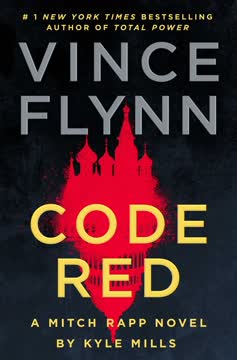
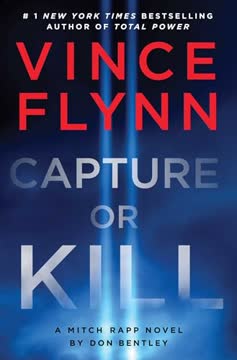
Similar Books
Download PDF
Download EPUB
.epub digital book format is ideal for reading ebooks on phones, tablets, and e-readers.
